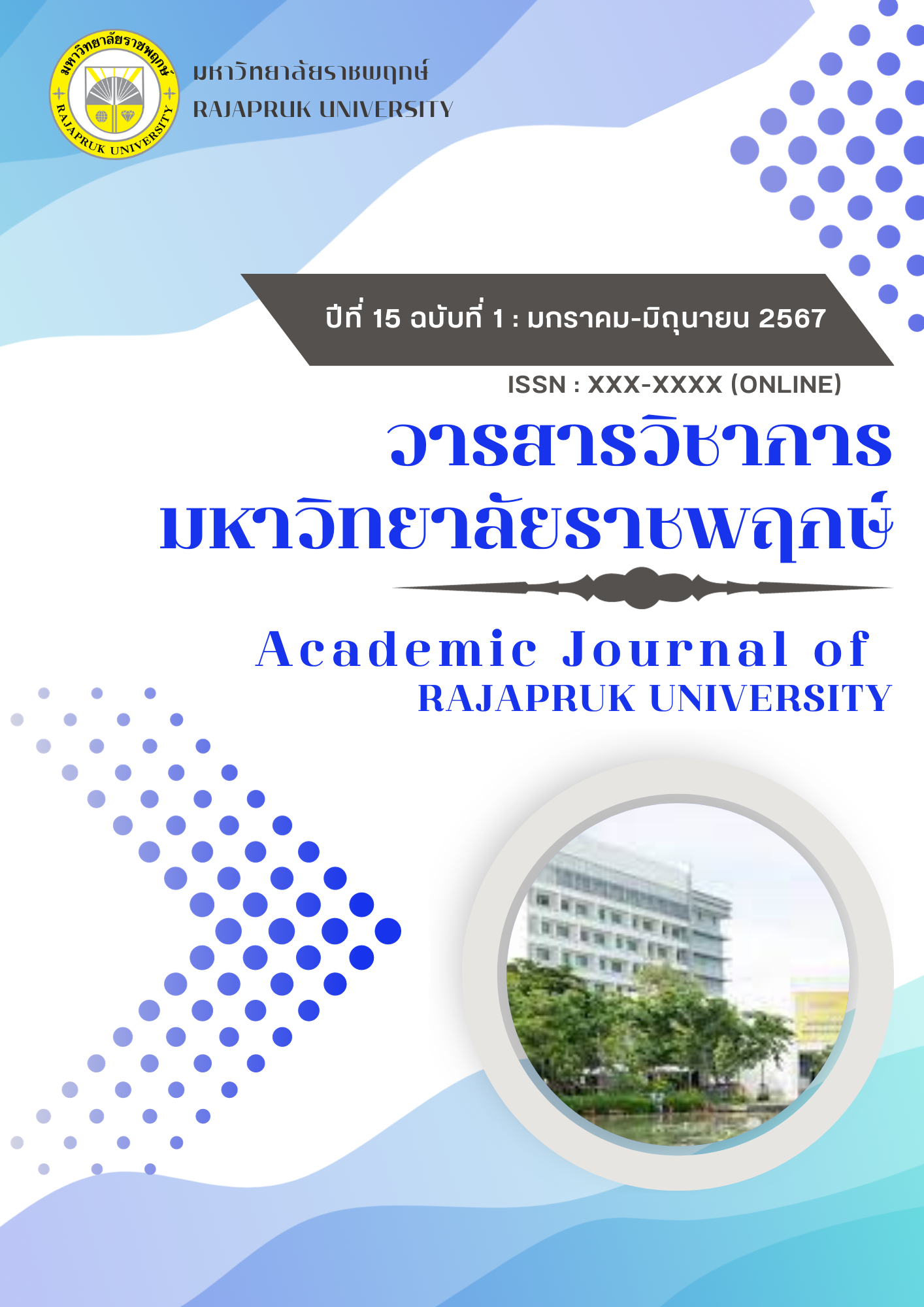Developing an Instructional Management Model to Promote Practical Skills According to Basic Concepts and Theories of Simpson and Harrow on Gesture of Thai Dance under Arts Learning Substance Group in Grade 5 Level
Main Article Content
Abstract
Abstract
The goal of teaching Thai dance is to promote students’ learning and development according to different learning objectives in many areas simultaneously through hands-on practice. The researcher is therefore interested in developing an instructional management model to promote practical skills according to basic concepts and theories of Simpson and Harrow on Gesture of Thai Dance under Arts Learning Substance Group in grade 5 Level. The objectives of this research were 1) to develop an instructional management model to promote practical skills based on basic concepts and theories of Simpson and Harrow on Gesture of Thai Dance under Arts Learning Substance Group in grade 5 level to achieve the efficiency criteria (E1/E2) of 75/75, 2) to study effectiveness index of the developed instructional management model to promote practical skills based on basic concepts and theories of Simpson and Harrow on Gesture of Thai Dance under Arts Learning Substance Group in grade 5 level,3) to study practical skills on Gesture of Thai Dance under Arts Learning Substance Group in grade 5 level of students taught with the developed instructional model, and 4) to study grade5 students’attitudes towards the developed instructional management model to promote practical skills based on basic concepts and theories of Simpson and Harrow on Gesture of Thai Dance under Arts Learning Substance Group in grade 5 level. The sample of this study was 34 students in grade 5/1 who have been studying in the second semester, academic year 2022 at Watthabantherngtham school, Bang Yai Subdistrict, Bang Yai district, Nonthaburi Province under the Nonthaburi Provincial Administrative Organization.
The sample was selected based on a cluster random sampling. The research instruments consisted of 1) The instructional management model to promote practical skills based on basic concepts and theories of Simpson and Harrow on Gesture of Thai Dance under Arts Learning Substance Group in grade 5 level with the highest suitability ( = 4.57, S.D.= 0.47), 2) The academic achievement test with a discriminative power between 0.22 and 0.64, a reliability of 0.90, 3) Practical skills assessment form with a discriminative power between 0.77 and 0.85, a reliability of 0.86, and 4) Scale of measuring attitudes towards the developed instructional management model with a discriminative power between 0.32 and 0.87, a reliability of 0.75. Data were analyzed using statistics including percentage (%), mean ( ), and standard deviation (S.D.).
The results of this research indicated as follows:
1.The developed instructional management model to promote practical skills based on basic concepts and theories of Simpson and Harrow on Gesture of Thai Dance under Arts Learning Substance Group in grade 5 level consisted of six components, namely 1) Basic concepts and theories, 2) Objectives, 3) Instructional management process comprising 6 phases: Phase 1: Preparation, Phase 2: Action, Phase 3 : Complete Action, Phase 4 : Expression, and Phase 5 : Improvement and Application, Phase 6: Conclusion, 4) Social system, 5) Response principles, and 6) Support system.
2.The efficiency of the developed instructional management model to promote practical skills based on basic concepts and theories of Simpson and Harrow on Gesture of Thai Dance under Arts Learning Substance Group in grade 5 level was 82.13/82.50, which was higher than the set criteria.
3.The effectiveness index of the developed instructional management model to promote practical skills based on basic concepts and theories of Simpson and Harrow on Gesture of Thai Dance under Arts Learning Substance Group in grade 5 level was 0.6136, indicating the students’ progress at 61.36%. Practical skills of the sample students taught with the developed instructional management model was at a good level (= 10.32, S.D. = 2.69).
- The sample’s attitude towards the developed instructional management model was at a high level (= 2.52, S.D. = 0.58).


